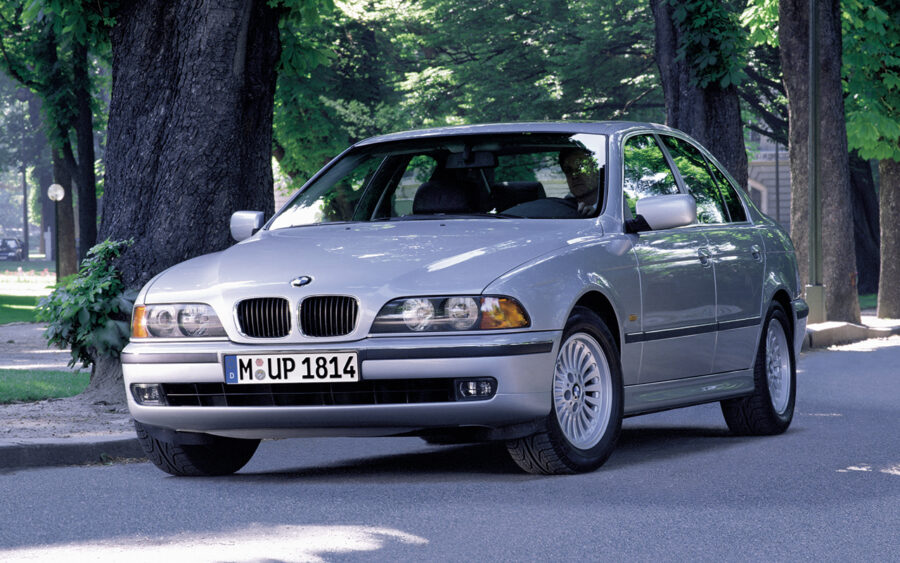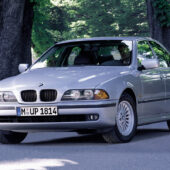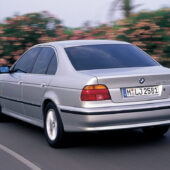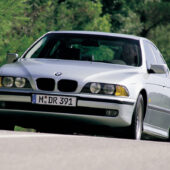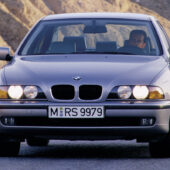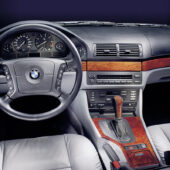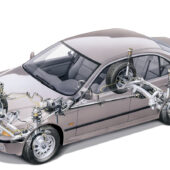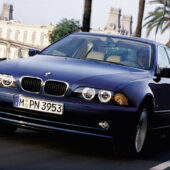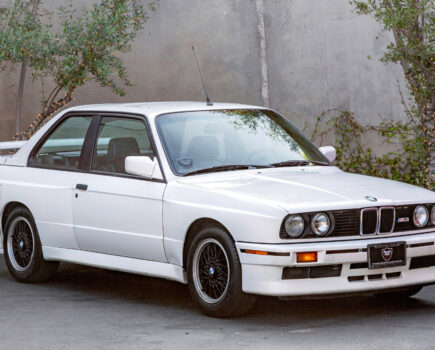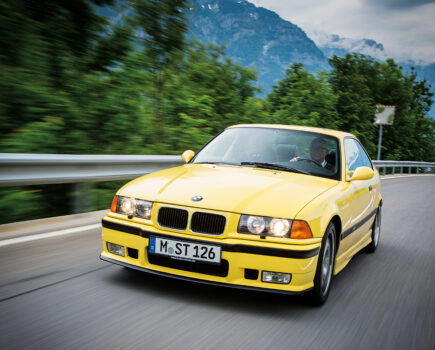Introduced in 1995, the E39 5 Series was a huge step forward over its predecessor – and possibly one of the best saloons ever made
Words: Simon Jackson
The fourth-generation E39 5 Series made its first appearance in autumn 1995 with instant impact. Perhaps key to the splash the car made was the way in which it blended contemporary design with iconic, time honoured, BMW styling cues. Its telltale combination of those piercing quad headlights, oh-so-identifiable kidney grille and the ever-present Hofmeister kink all screamed ‘BMW’ to the viewer – this was a model that successfully evolved the 5 Series story, building on the E34 that came before it while incorporating hints of new siblings – the E36 and E38.
The blend of evolution meeting revolution in just the right proportion was continued from outside in, the cabin’s driver centric nature being more focused, rounded and pleasing on the eye. It was a powerful package. So powerful in fact that the E39 5 Series decimated its rivals in virtually every test one might throw its way, and not just during its infancy but also in its twilight years – it remained in production for eight years. Many will agree that the E39 story culminated with the introduction of the M5 variant in the late 1990s, but for the purposes of this feature we look at the ‘non M’ models.
The E39’s shell was some 50 percent stiffer than that of its forebear, BMW employed aluminium to create its suspension components, and lighter drivetrain elements saved 36 percent over their equivalent steel counterparts. The result was that the E39 weighed less than the E34, and a lower kerb weight than its predecessor was all the more impressive given that the car was larger in pretty much every respect.
Two petrol engines and one diesel were available at launch; the 523i’s 2.5-litre (170hp) M52 engine leading the charge, from the (193hp) mill in the 528i, the somewhat lethargic (143hp / 191lb ft) diesel engine found in the 525tds was lifted from the E34. Soon enough the entry-level 520i model joined the party, its two-litre straight-six producing 150hp, but it was the 535i and 540i variants that served to excite. The 535i produced 235hp and 243lb ft of torque, the 540i’s 4.4-litre V8 produced 286hp and 310lb ft – 15lb ft more than the E34 version could muster and produced at 3900rpm – 600rpm earlier. Both the 535i and 540i V8s got six-speed manual gearboxes as standard, rear air suspension and M Sport suspension. Options included an automatic gearbox and Park Distance Control.
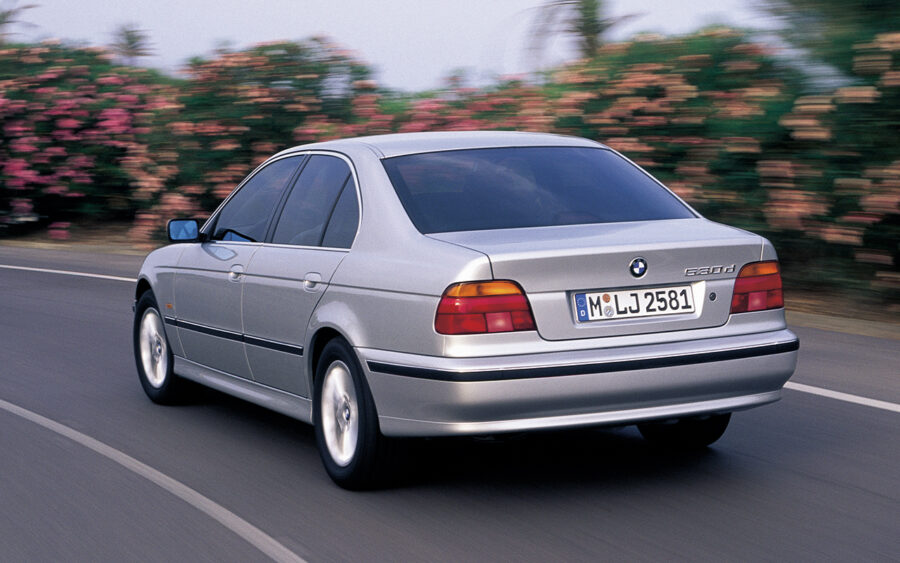
While rack and pinion steering was standard issue on the six-cylinder cars, on account of space restrictions the V8 versions retained the E34’s recirculating ball setup. Early cars came in standard or SE specification – all had ABS, traction control, twin airbags and an alarm, SE trim added air-conditioning, alloy wheels, fog lamps and onboard computer.
It was 1997 before the E39 Touring arrived, it too was a looker albeit a practical one. The retention of the separately opening rear window feature was a plus for many, further convenience came in the shape of an optional sliding loading floor and electric tailgate – common nowadays but very much not so back then. Trim levels were revised too, and models gaining driver and passenger airbags, SE models received a multi-function steering wheel, 540is the DSC III.
The following year, 1998, welcomed power plant revisions. These were headlined by the arrival of the 530d and its M57 engine. It’s no exaggeration to say that this direct-injection turbocharged diesel engine was a game changer – its 193bhp on par with the petrol 528i, its torque (302lb ft) similar to the aforementioned petrol V8 540i. It was both incredibly useable and economical. The diesel range was further expanded that same year with the four-cylinder 520d and 525d. BMW did not leave its petrol units out, chief among the revisions the addition of double VANOS across the range. The 520i’s two-litre mill grew to 2.2-litres in size and now boasted 170hp and 155lb ft torque, the 523i morphed into the 525i with 192hp and 181lb ft torque.
In keeping with the other changes, the 528i became the 530i (231hp / 221lb ft), the 535i gained 10hp giving it 245hp and 255lb ft torque. With the addition of double VANOS the 540i’s power and torque increased – both now being produced lower down the rev range. Note too that BMW now made the Steptronic gearbox the automatic across the model range. The 535i and 540i received Dynamic Brake Control at this time, in 1999 came the first Sport models. These most desirable of E39s got an aero kit, Sport suspension, Sport seats and steering wheel, 18-inch alloys, brushed aluminium trim and Sport kick plates.
In 2001 came the model’s facelift, amongst the subtle changes came a tweaked chrome strip around the kidney grille and a switch from square fog lamps to round versions. More obvious changes were fresh front and rear light clusters, adopting the angel eye halos we now know so well. Once more trim levels were revised, too, The ES (Edition Sport) model was introduced on the 520i and 525d, it lifted elements of the Sport and equipment from the SE, perhaps surprisingly it was the cheapest variant on offer other than the entry-level specification model. Five limited edition models also came, each in a special order colour, either Avus blue, Aegean blue, Champagne, Champagne II or Midnight Blue.
The E39 wasn’t just popular due to its looks, the driving experience it delivered was phenomenal too – compliant, comfortable and engaging. It’s well known that the six-cylinder models handle best, there’s little in the way of weight over front wheels and in combination with the rack and pinion steering that provided sharp and precise handling. That is to say that the extra weight over the front wheels hampers progress somewhat, and the recirculating ball steering setup does not afford as much eel through the wheel. That the standard gearbox was a slick and rewarding manual one ensured driver involvement was maximised, however the automatic gearbox was also a good, smooth one, though the later Steptronic-equipped cars were better, the switchable system allowing the driver shift up and down through the gears manually.
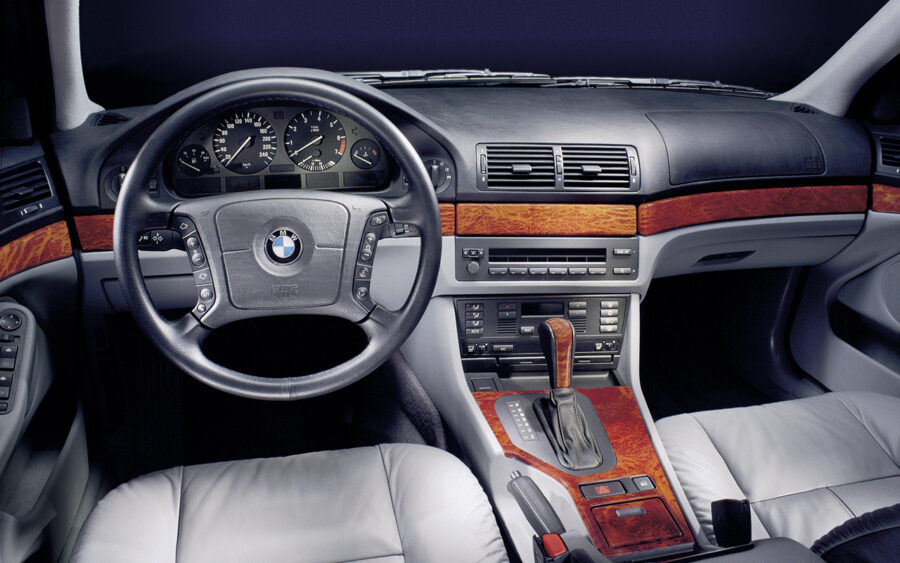
BMW 5 Series (E39) timeline
1995
523i, 528i and 525tds launched, available in standard- or SE-spec. 520i and V8-powered 535i and 540i added later in the year.
1997
Touring model launched in 520i, 523i, 528i, 540i or 525tds – tds the biggest seller. Specs levels revised – airbags now standard, SE gets multi-function steering wheel, V8s get DSC III.
1998
530d launched, 520d and 525d follow. All petrols now get double VANOS, 520i grows to 2.2-litres and (170hp), 523i becomes 525i (192hp), 528i becomes 530i (231hp). Option automatic gearbox replaced by Steptronic with manual shift (not available on 520d).
2000
Facelift: kidney grilles get wider chrome strips, round fog lights, Celis rear-light clusters with LED strips, revised headlight clusters with forward-facing indicators, projector headlamps and angel eyes. Sport model introduced, gets; aero kit, bigger wheels, Sport seats and suspension. ES model combines equipment from Sport and SE. 530d power raised to 193hp (up 9hp).

